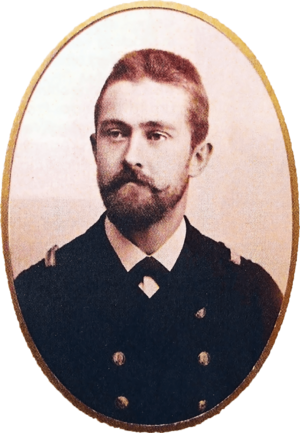Theodor Scheimpflug facts for kids
Quick facts for kids
Theodor Scheimpflug
|
|
|---|---|
 |
|
| Born | October 7, 1865 |
| Died | August 22, 1911 (aged 45) Mödling
|
| Nationality | Austrian |
Theodor Scheimpflug was an Austrian army captain who lived from 1865 to 1911. He is well-known for creating a special way and equipment to fix how things look distorted in aerial photographs. This method is now called the Scheimpflug principle, named after him. Even though it's named after him, he always said he didn't invent it. He gave credit to an earlier French photography engineer named Jules Carpentier.
Contents
Theodor Scheimpflug's Life
Theodor Scheimpflug was born in Vienna, Austria, on October 7, 1865. He grew up and later attended college in Vienna in 1897. He began his important work with photography in 1902. Theodor Scheimpflug passed away on August 22, 1911, in Mödling, Austria.
Understanding Scheimpflug's Work
Theodor Scheimpflug is most famous for developing the Scheimpflug principle. This principle helps photographers understand the area of critical focus in a view camera. Critical focus is the part of an image that looks perfectly sharp and clear.
The Scheimpflug Principle Explained
Imagine you are taking a picture of a long fence that stretches far away. If you point your camera straight, only a small part of the fence might be in perfect focus. The Scheimpflug principle helps you tilt the camera lens and the film (or sensor) so that the entire fence, from near to far, can be in sharp focus. This is very useful for things like landscape photography or taking pictures of tall buildings.
Aerial Photography Innovations
Theodor Scheimpflug was also very involved in aerial photography. This is the art of taking pictures from an aircraft, like a hot air balloon or an airplane. He held several patents related to this field. His work helped make aerial photographs clearer and more useful, especially for mapping and military purposes.
See also

